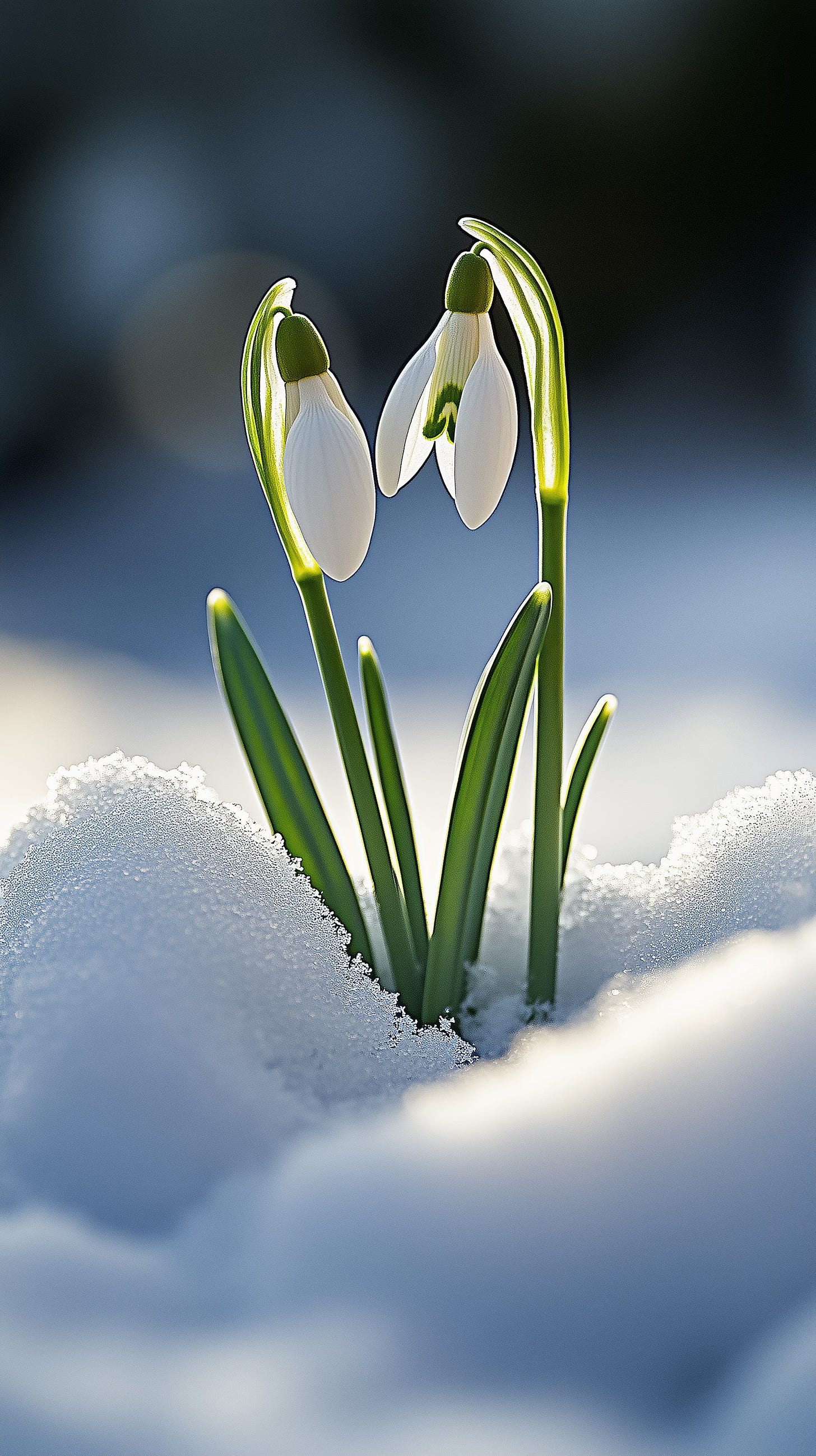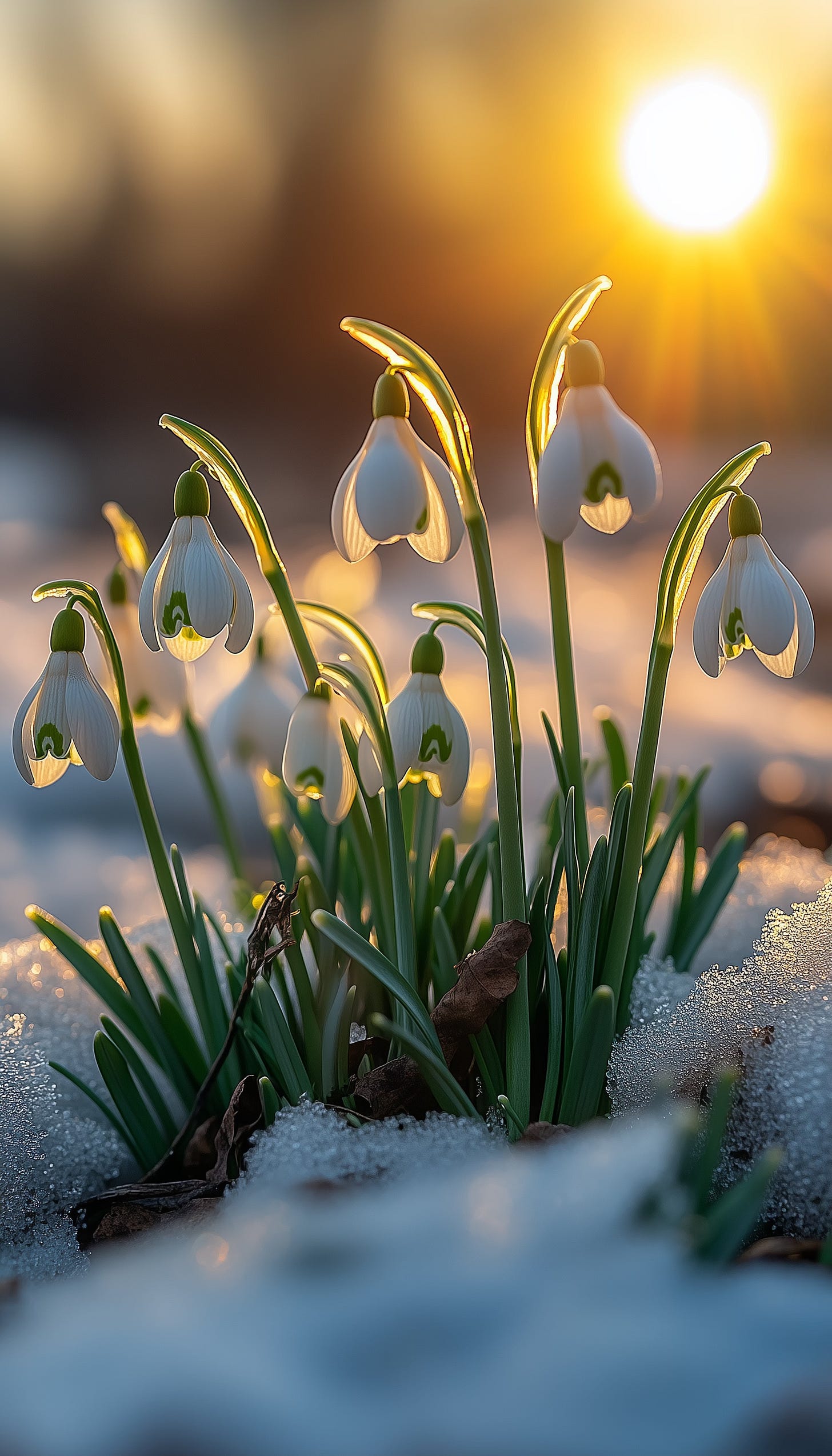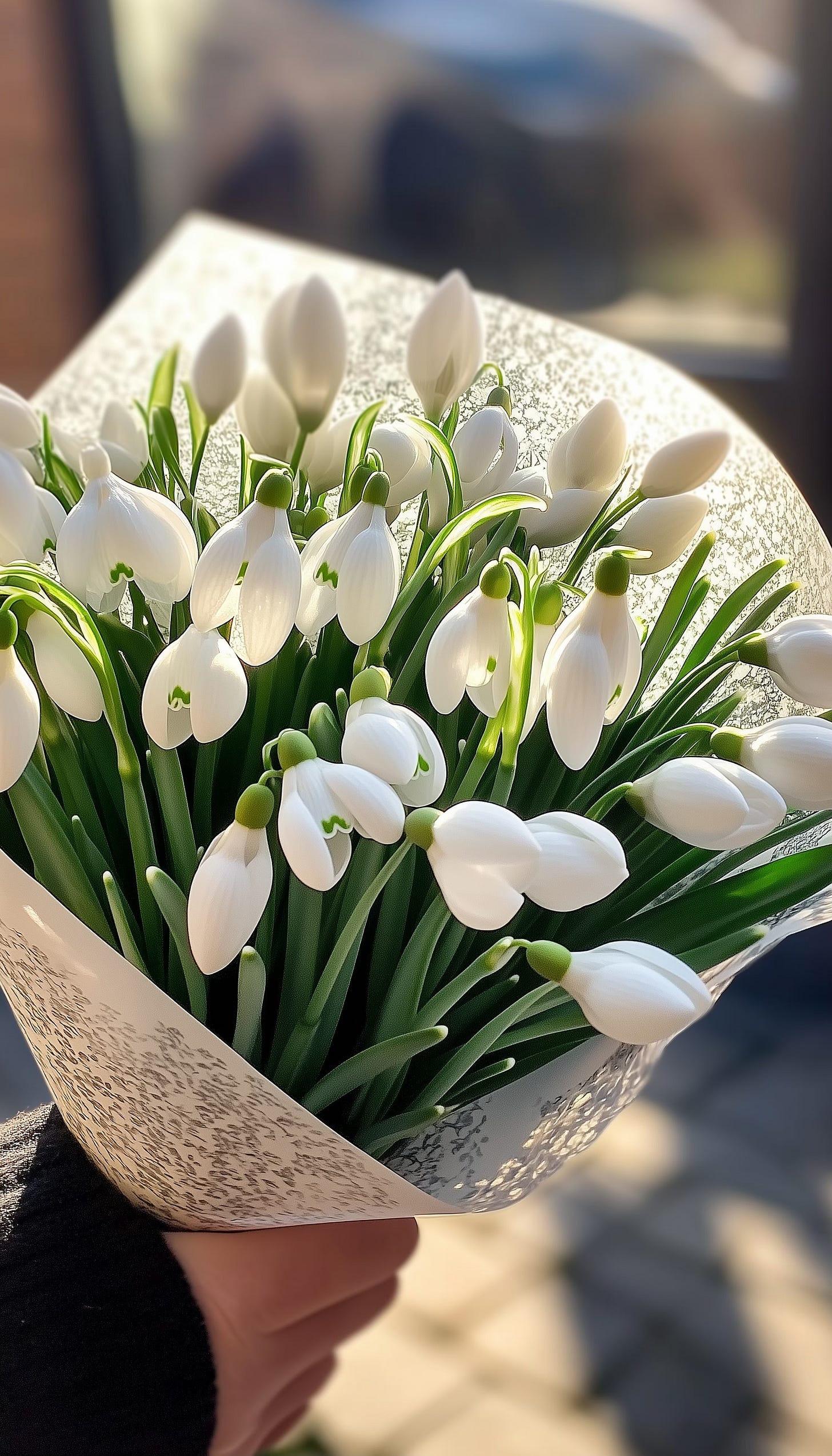Snowdrops: Nature’s Harbingers of Spring
As winter’s icy grip begins to loosen, a remarkable transformation takes place across snow-covered landscapes. Delicate yet resilient, snowdrops (Galanthus) push through the receding frost, signaling the arrival of spring. These early bloomers thrive in the unique conditions created by melting snow. Their ability to break through frozen ground not only makes them symbols of endurance and renewal but also plays a crucial ecological role.
The Benefits of Snowdrops
Natural Insulation and Microclimate Creation
Snowdrops utilize the warmth of melting snow to create a microclimate, providing a protective environment for themselves and other emerging plants. Their dark-colored petals absorb heat, accelerating the thawing process around them.Early Pollination Opportunities
By blooming before most other flowers, snowdrops provide essential nectar and pollen for early-emerging bees, butterflies, and other pollinators that wake from hibernation in search of food.Soil Enrichment and Nutrient Cycling
These flowers help rejuvenate the soil by breaking it open as they grow, allowing moisture and nutrients from decomposing organic material to be absorbed more efficiently.Symbolism and Cultural Significance
Many cultures see snowdrops as a sign of rebirth, hope, and perseverance. They are often featured in poetry, folklore, and religious ceremonies celebrating the renewal of life.Indicators of Climate Patterns
Because they bloom based on temperature and snowmelt, these flowers are valuable indicators of climate change, helping scientists track shifts in seasonal patterns and ecological health.
The Science Behind Snowdrops’ Ability to Melt Snow
Snowdrops possess an extraordinary adaptation: thermogenesis, the ability to generate heat. Some species can raise their internal temperatures above freezing, allowing them to melt the surrounding snow. This adaptation ensures that they can emerge even when winter still lingers, giving them a head start before other plants wake from dormancy.
Dark pigments in the petals also contribute to this process, absorbing solar radiation and converting it into heat, which further accelerates snowmelt. Their hardened leaf tips help pierce through icy ground, while antifreeze proteins in their tissues prevent ice crystal formation, allowing them to survive extreme cold.
Cultural and Historical Significance
Throughout history, snowdrops have been revered as emblems of resilience and renewal. In many traditions, they symbolize hope after hardship, making them prominent in festivals and rituals. Snowdrops are closely associated with the Christian festival of Candlemas, representing purity and new beginnings. In Eastern European folklore, they are often linked to the legend of spring’s arrival, where they are said to have bloomed from a drop of the Snow Queen’s melted tears.
In Japan, early-blooming plum blossoms (Ume), though different from snowdrops, are celebrated in festivals as precursors to the cherry blossoms, symbolizing endurance against adversity. In Alpine and Nordic regions, local festivals honor these tenacious blooms as a sign that the long winter is finally ending.
Festivals Celebrating Snowdrops
Scottish Snowdrop Festival (Scotland) – A month-long celebration in February and March, featuring snowdrop walks across historic estates and botanical gardens.
Alcsút Arboretum Snowdrop Festival (Hungary) – Near Budapest, this festival invites visitors to witness vast carpets of snowdrops, with guided tours available.
Candlemas (Europe) – Celebrated on February 2nd, this Christian festival honors the snowdrop as a symbol of purity and new beginnings.
Spring Equinox Festivals (Various Cultures) – Ancient civilizations, including the Celts and Native American tribes, recognized early bloomers in their rites of seasonal change.
Wildflower Festivals (United States & Canada) – National parks and mountain towns celebrate early wildflowers emerging from melting snow with guided hikes and cultural events.
A Lesson from Nature’s Resilient Bloomers
Snowdrops remind us of nature’s resilience and beauty, thriving even in the harshest conditions. As the first to break through winter’s icy hold, they set the stage for the renewal of life, offering an annual spectacle of hope, endurance, and ecological importance. Their ability to harness warmth, support pollinators, and enrich the soil makes them indispensable to their ecosystems—and a source of inspiration to all who witness their determined emergence
.








